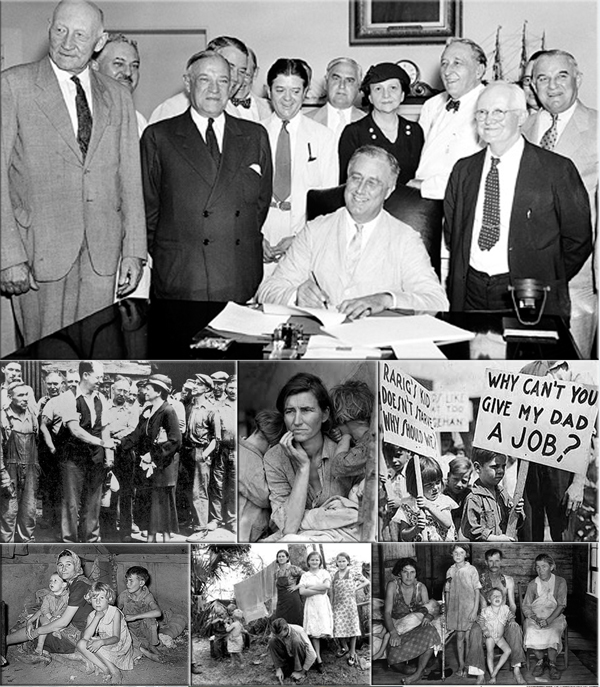
Franklin D. Roosevelt signs Social Security Act on August 14, 1935.
FDR signs Social Security Act: On August 14, 1935, in Washington, D.C., President Franklin D. Roosevelt signs into law the Social Security Act. Press photographers snapped pictures as FDR, flanked by ranking members of Congress, signed into law the historic act, which guaranteed an income for the unemployed and retirees. FDR commended Congress for what he considered to be a “patriotic” act.
Roosevelt had taken the helm of the country in 1932 in the midst of the Great Depression, the nation's worst economic crisis. The Social Security Act (SSA) was in keeping with his other “New Deal” programs, including the establishment of theWorks Progress Administration (WPA) and the Civilian Conservation Corps (CCC), which attempted to hoist America out of the Great Depression by putting Americans back to work.
In his public statement that day, FDR expressed concern for “young people [who] have come to wonder what would be their lot when they came to old age” as well as those who had employment but no job security. Although he acknowledged that “we can never insure one hundred percent of the population against one hundred percent of the hazards and vicissitudes of life”, he hoped the act would prevent senior citizens from ending up impoverished.
Although it was initially created to combat unemployment, Social Security now functions primarily as a safety net for retirees and the disabled, and provides death benefits to taxpayer dependents. The Social Security system has remained relatively unchanged since 1935. History Channel / Wikipedia / Social Security Administration.gov
President Franklin D. Roosevelt signs the Social Security Bill in Washington, Aug. 14, 1935. (Social Security Administration.gov)
● Dorothea Lange's Migrant Mother (FDR Library)
● Great Depression Photos (Library of Congress)
● Great Depression Color Photos (Library of Congress / Daily Mail)
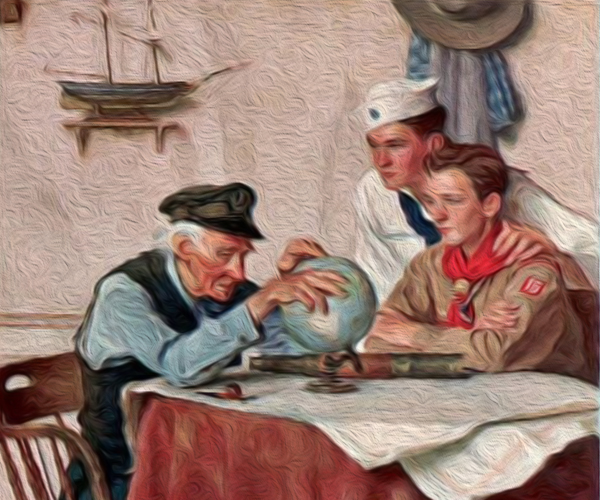
Understanding Military Terminology - elicitation
(DOD) Elicitation: In intelligence usage, the acquisition of information from a person or group in a manner that does not disclose the intent of the interview or conversation. (FBI)

The Old Salt’s Corner
Target angle is the relative bearing of the observing station from the vehicle being observed. It may be used to compute point-of-aim for a fire-control problem when vehicle range and speed can be estimated from other information. Target angle may be best explained from the example of a submarine preparing to launch a straight-run (non-homing) torpedo at a moving target ship. Since the torpedo travels relatively slowly, the torpedo course must be set not toward the target, but toward where the target will be when the torpedo reaches it. Target angle is used to estimate target course.
The submarine observer estimating target angle pictures himself on the target ship looking back at the submarine. Relative bearing of the submarine is the clockwise angle in degrees from the heading of the target ship to a straight line drawn from the target ship to the submarine.
When target angle is 0° (or 360° ) the target ship is coming directly toward the submarine.
Target angles between 0° and 90° indicate the target ship is moving toward and to the right of the submarine.
Target angles between 90° and 180° indicate the target ship is moving to the right and away from the submarine.
When target angle is 180° the target ship is moving directly away from the submarine.
Target angles between 180° and 270° indicate the target ship is moving away from and to the left of the submarine.
Target angles between 270° and 360° indicate the target ship is moving to the left and toward the submarine.
A target passing a stationary observer from left to right might have target angles progressing from 45° to 135°, with broadside facing of 90° marking the minimum distance between target and observer. A target moving from right to left on the same track would have target angles progressing downward from 315° to 225° with the closest point of approach occurring at 270°. (Wikipedia / Telegraph)

“I’m Just Sayin’”
“Why is it that writers write but fingers don't fing, grocers don't groce and hammers don't ham?”

“Thought for the Day”
“Sometimes you have to burn a few bridges to keep the crazies from following you.”
~ Anonymous
“What I Have Learned”
If you cannot get people to listen to you any other way, tell them it's confidential.
~ Patrick Murray (born December 17, 1956)

Bizarre News (we couldn’t make up stuff this good – real news story)
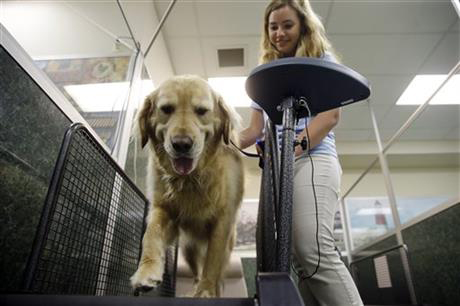
LOS ANGELES, California - U.S. obesity continues to grow - for pets as well as people - but exercise innovations for humans seem to trickle down to dogs. A July Associated Press report noted that fat Labradors and poodles now have Pilates (“pawlates”) and yoga (“doga”) and even play “Barko Polo” in the pool.
The Associated Press article cited Morris Animal Inn’s five-day fitness camps for dogs ($249) in Morristown, N.J. (More cats than dogs are overweight, but getting cats to the gym is perhaps beyond human capability.) Associated Press

Mr. Answer Man Please Tell Us: Who decided there would be 5,280 feet to a mile?
The measurement known as a mile is a vestige of the Roman Empire's rule over Britain. At this time, the Romans had a measurement known as mille pasuum (ME-lay PA-soo-em), or a thousand paces. A pace comprised five, possibly sandal shod, Roman feet. Using a simple mathematical calculation, we arrive at 5,000 feet per mile.
The demise of the Roman Empire left the Britons in a quandary. They now had a mile, consisting of 5,000 feet, and their own agricultural measurement, the furlong, used to measure the farmers' fields for the purpose of property deeds, etc. Instead of using the Roman foot in calculating the measure of a furlong, they used the distance a horse could pull a plow, in a linear fashion, before the nag needed a nap. They agreed that this measurement consisted 660 feet.
Now came the dilemma. The British wished to marry the furlong to the mile, but, as they wanted a mile to comprise eight furlongs, totaling 5,280 feet, instead of the Roman 5,000 feet per mile, they had no choice but to select one of the two. Not surprisingly, they chose their measurement over the Roman measurement because, as property deeds at the time were measured in furlongs, or 660 feet, a change to the Roman measurement would short the farmer or landowner. Wikipedia
Image: Mile: (Ancient Roman roads - Roman architectural relief from the 1st century AD showing that grape treading was still widely used as a means of pressing wine grapes during Roman times (Wikipedia)
(The Decline and Fall of the Roman Denarius (Telegraph) Battle of Actium (Wikipedia)
(Neolithic farmers used manure on crops (BBC) Forgotten Roman Britain to life (Daily Mail) Journeys in Roman Britain (The Guardian))

Where Did That Saying Come From?
Short shrift: A shrift was a confession made to a priest. Criminals were allowed to make a short shrift before they were executed. so if you gave somebody short shrift you gave them a few minutes to confess their sins before carrying out the execution.Phrases.org UK
Image: Why Naked Men Get Short Shrift (Paul Cézanne's “Seven Bathers”. Fondation Beyeler, Riehen/Basel, Wall Street Journal)

NAVSPEAK aka U.S. Navy Slang
Bluejacket: An enlisted sailor below the rank of E-7 (Chief Petty Officer).
- Bluejacket's Manual: The handbook of seamanship issued to recruits.
- Page 92: Upon doing something stupid, recruits will often be required to read the paragraph entitled “Discipline” multiple times while holding the Bluejacket's Manual at arms length.
This is usually done when the redropes have exhausted the recruits to the point where more ITE would possibly get them into trouble.
Deployment: When your unit travels “over the horizon” and operates at the “pointy end of the spear” in support of national security. Most naval deployments last a minimum of six months (if you're lucky!). Work-ups precede deployment. See “cruise”
Gig line: The visual line formed by uniform zipper, belt buckle, and buttoned shirt seam. Also used as another in-joke to send new sailors on a wild goose chase. See bulkhead remover.
IYAOYAS: Unofficial acronym commonly found on the uniforms of airedales who specialize in ordnance handling, such as the Aviation Ordnance of the United States Military. Read as “If you ain't ordnance, you ain't shit”.
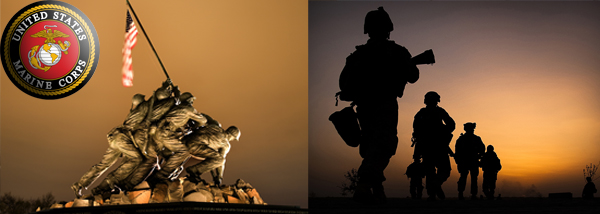
Just for you MARINE
CAX: Combined Arms Exercise. Exercises the MAGTF.
CC: Correctional Custody.
CG: Commanding General.

Navy Acronyms
FST - Fleet Support Team
FYDP - Future Year Defense Program
F3I - Form, Fit, Function Interface

Naval Aviation Squadron Nicknames
VP-45 - Patrol Squadron 45: “Pelicans” NAS Jacksonville, Florida

The Strange, Mysterious or Downright Weird

French Revolution
Over two hundred years ago, King Louis XVI of France was forced to convene a form of parliament for the first time in more than a century.
At the assembly, the more radical delegates took up seats on the left of the King, while their conservative counterparts sat on his right. Ever since, liberal views have been referred to as from the left, and conservative ideas as from the right. (Wikipedia)
Image: French Revolution (Louis XVI, roi de France et de Navarre (1754-1793), Antoine-François Callet)
OH WHAT A YEAR - 1942

1. White Christmas - Bing Crosby
2. I've Got a Gal in Kalamazoo - Glenn Miller
3. Tangerine - Jimmy Dorsey
4. Moonlight Cocktail - Glenn Miller
5. Sleepy Lagoon - Harry James
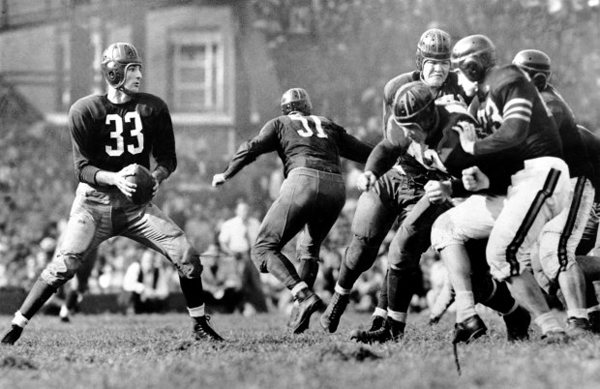
Note - many sporting events did not take place because of World War II
● President Franklin D. Roosevelt gives baseball the go-ahead to play despite World War II. FDR encourages more night baseball so that war workers may attend. The Cubs, who had signed contracts to install lights at Wrigley Field, drop their plans because of the military need for the material. There will be no lights at Wrigley for 46 more years.
● World Series Champions: The St. Louis Cardinals defeat the New York Yankees 4 games to 1
● Negro World Series: Kansas City Monarchs swept the Homestead Grays 4 games to none
● NFL Champions: Washington Redskins in Washington, D. C. defeat the Chicago Bears 14-6
● NBL Champions: Oshkosh All-Stars win two games to one over the Fort Wayne Zollner Pistons
● Stanley Cup Champs: Toronto Maple Leafs defeat the Detroit Red Wings 4 games to 3
● U.S. Open Golf: Not played due to World War II
● U.S. Open Tennis (Men/Ladies): Frederick “Ted” Schroeder / Pauline Betz
● Wimbledon (Men/Women): Not Held
● NCAA Football Champions: Ohio State Buckeyes (coached by Paul Brown) shared with Georgia Bulldogs
● NCAA Basketball Champions: Stanford
● Kentucky Derby: Shut Out
Image: Series History: Redskins – Bears (Sammy Baugh drops back to pass against the Bears in 1942 (AP, Washington Redskins' Blog)
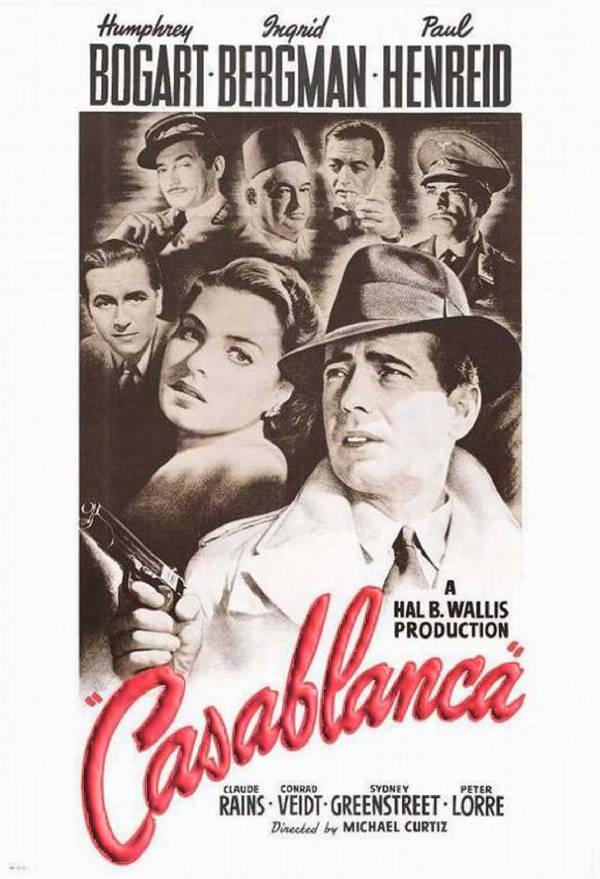
1. Casablanca
2. Random Harvest
3. Bambi
4. The Pride of the Yankees
5. I Married a Witch
Image: Casablanca (Warner Brothers Pictures)
Most Popular Christmas gifts 1942
Little Golden Books
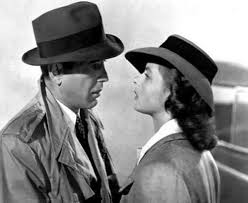
● “Here's looking at you, kid”
● “Of all the gin joints in the world, she had to walk into mine”
● “We'll always have Paris.”
~ Humphrey Bogart in “Casablanca”
● “Play it, Sam. Play 'As Time Goes By'.”
~ Ingrid Bergman in “Casablanca”
● “Today, I consider myself the luckiest man on the face of the earth.”
~ Gary Cooper as Lou Gehrig in “The Pride of the Yankees”
● “My mother thanks you. My father thanks you. My sister thanks you. And I thank you.”
~ James Cagney as George M. Cohan in “Yankee Doodle Dandy”
Image: Humphrey Bogart and Ingrid Bergman in “Casablanca”

Trivia
● Thomas Edison’s first major invention was the quadruplex telegraph. Unlike other telegraphs at the time, it could send four messages at the same time over one wire.
● The planet Venus does not tilt as it goes around the Sun, so consequently, it has no seasons. On Mars, however, the seasons are more exaggerated and last much longer than on Earth.
● The first parking meter was installed in Oklahoma City, Oklahoma, in 1935.
A Test for People Who Know Everything
Who is the only person ever to decline a Pulitzer Prize for Fiction?
● Answer for People Who Do Not Know Everything, or Want to Verify Their AnswerWikipedia
Answer to Last Week's Test
At what annual sports event is a player given the title “Mr. Irrelevant”?
Answer: “At the NFL Draft” - The dubious distinction is bestowed upon the player who is selected last and has only a slim chance of making the roster of the team that picked him. With the title, the last pick gets a week’s vacation and banquet in Newport Beach, CA and a Lowsman Trophy, a statuette of a player fumbling a football.
Joke of the Day
Little Tommy was doing very badly in math. His parents had tried everything; tutors, flash cards, special learning centers, in short, everything they could think of. Finally in a last ditch effort, they took Tommy down and enrolled him in the local Catholic School.
After the first day, little Tommy comes home with a very serious look on his face. He doesn't kiss his mother hello. Instead, he goes straight to his room & starts studying. Books & papers are spread out all over the room and little Tommy is hard at work.
His mother is amazed. She calls him down to dinner and to her shock, the minute he is done he marches back to his room without a word and in no time he is back hitting the books as hard as before. This goes on for some time, day after day while the mother tries to understand what made all the difference.
Finally, little Tommy brings home his report card. He quietly lays it on the table and goes up to his room and hits the books. With great trepidation, his mom looks at it and to her surprise, little Tommy got an A in math.
She can no longer hold her curiosity. She goes to his room and says: “Son, what was it? Was it the nuns?”
Little Tommy looks at her and shakes his head “No”.
“Well then”, she replies, “was it the books, the discipline, the structure, the uniforms, WHAT was it?”.
Little Tommy looks at her and says, “Well, on the first day of school, when I saw that guy nailed to the plus sign, I knew they weren't fooling around.”




















